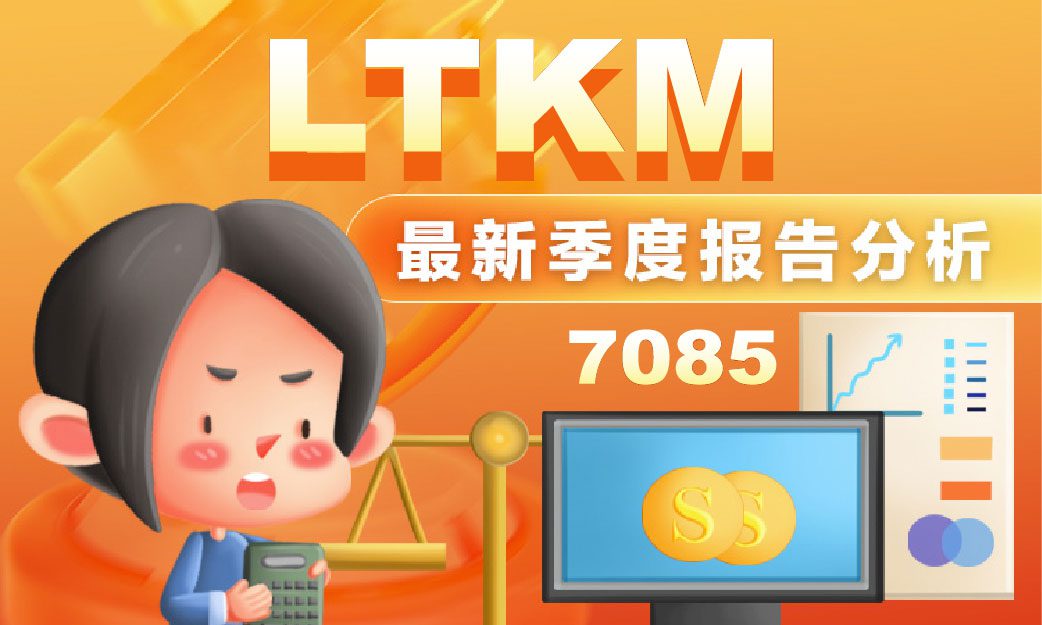LTKM Berhad’s Q1 2026 Results: Profit Soars 111% Despite Revenue Dip – A Deep Dive
LTKM Berhad has just released its latest quarterly report for the period ending June 30, 2025, and the numbers tell a fascinating story. At first glance, a drop in revenue might seem concerning, but a closer look reveals a spectacular surge in profitability, with net profit more than doubling. This paradoxical performance warrants a deeper analysis for any investor keeping an eye on the Malaysian poultry sector.
The standout figure? A stunning 111% increase in net profit for the quarter, coupled with the declaration of a 2 sen final dividend. Let’s unpack the details to understand what’s driving these impressive results and what challenges lie ahead.
Core Financials: A Tale of Two Metrics
This quarter’s results present a classic case of why looking beyond the top-line revenue figure is crucial. While sales were lower compared to the same period last year, the company’s bottom line painted a much brighter picture.
Revenue
Q1 FY2026 (Current Quarter)
RM 49.09 million
Q1 FY2025 (Same Quarter Last Year)
RM 55.89 million
The Group’s revenue saw a 12% decrease, primarily attributed to lower average selling prices for eggs. This reflects the competitive and often volatile nature of the poultry market.
Profit Before Tax (PBT)
Q1 FY2026 (Current Quarter)
RM 12.36 million
Q1 FY2025 (Same Quarter Last Year)
RM 6.59 million
Despite lower sales, pre-tax profit skyrocketed by an impressive 87%. The key driver for this was not operational sales but a significant boost in ‘Other Income’, which included higher subsidies received from the government. This external support was instrumental in offsetting the impact of weaker egg prices.
Net Profit
Q1 FY2026 (Current Quarter)
RM 12.16 million
Q1 FY2025 (Same Quarter Last Year)
RM 5.77 million
The bottom line saw an even more remarkable jump, with net profit surging by 111%. This highlights the powerful effect of the increased other income and a lower effective tax rate for the quarter.
Earnings Per Share (EPS)
Q1 FY2026 (Current Quarter)
8.50 sen
Q1 FY2025 (Same Quarter Last Year)
4.03 sen
For shareholders, this translates into more than double the earnings per share compared to the same period last year, a clear indicator of enhanced value creation during the quarter.
Unpacking the Business Segments
A look at the individual business units provides further clarity on the Group’s performance.
| Segment | Revenue (RM’000) | Segment Result (RM’000) | Result Change vs. Last Year |
|---|---|---|---|
| Poultry & related products | 46,888 | 11,111 | +90% |
| Extraction & sale of sand | 1,996 | 352 | -12% |
| Investment holdings | 210 | 940 | +114% |
- Poultry & Related Products: This core segment perfectly encapsulates the quarter’s story. Revenue fell 13% due to lower egg prices, but segment profit surged by 90%, thanks to the aforementioned government subsidies.
- Extraction & Sale of Sand: This segment faced headwinds, with profits declining by 12% due to higher production costs.
- Investment Holdings: A bright spot, with earnings more than doubling due to higher dividends received from its investments.
A Look at Financial Health
LTKM’s financial position remains robust. The company’s cash and bank balances have increased to a healthy RM 72.7 million. More importantly, cash generated from operating activities was very strong at RM 19.4 million, a significant improvement from RM 5.1 million in the previous year, showing that the core business is efficiently generating cash. Total borrowings have also been reduced, indicating prudent financial management.
Navigating a Challenging Market Ahead
Looking forward, the Board of Directors has adopted a cautious tone. They foresee the upcoming period to be “challenging due to supply situation in the market,” even with the removal of price controls effective from August 1, 2025. This suggests that an oversupply of eggs could continue to put pressure on selling prices.
In response, LTKM’s strategy is clear: to “continue to focus on operational efficiencies and cost management to minimize the impacts.” This proactive stance is crucial for navigating market volatility and protecting profit margins.
A Reward for Shareholders
In a move that will please investors, the Board has declared a single-tier final dividend of 2 sen per share for the financial year ended March 31, 2025. This decision reflects the company’s strong profitability and commitment to returning value to its shareholders.
Summary and Investment Recommendations
LTKM Berhad’s latest quarter was a story of resilience and strategic financial management. While market forces led to a revenue decline, the company achieved remarkable profit growth, largely supported by government subsidies. The financial foundation appears solid, with strong operational cash flow, a healthy cash balance, and reduced debt.
However, investors should remain mindful of the challenges ahead. The management’s cautious outlook on the market supply situation is a key factor to watch. The company’s ability to translate its focus on operational efficiency into sustained profitability in a post-price control environment will be critical.
- Market Oversupply: The “challenging supply situation” mentioned by the board could continue to pressure egg prices and, consequently, revenue.
- Subsidy Dependency: This quarter’s stellar results were heavily supported by government subsidies. Any changes to this policy could significantly impact future earnings.
- Cost Management: With rising production costs affecting some segments, the company’s ability to manage expenses across its core poultry business will be paramount.
My Take and Your Thoughts
From my perspective, while the headline profit growth is spectacular, it’s crucial for investors to look deeper. The reliance on subsidies highlights a potential vulnerability, but the company’s strong operational cash flow and prudent debt management provide a solid foundation. The key will be their ability to navigate the post-price control market and maintain profitability through the efficiencies they are targeting.
What are your thoughts on LTKM’s performance? Do you believe their focus on operational efficiency is enough to counter the challenging market supply ahead?
Share your views in the comments section below!
